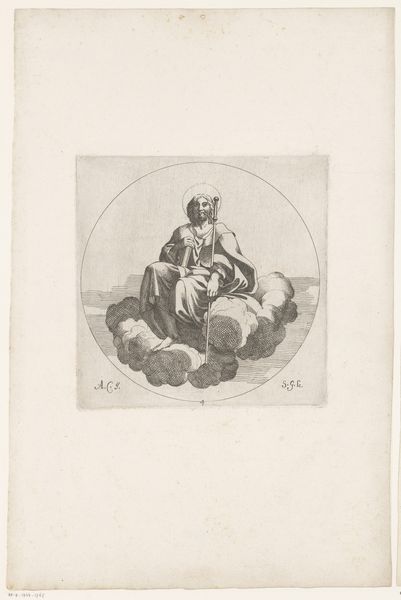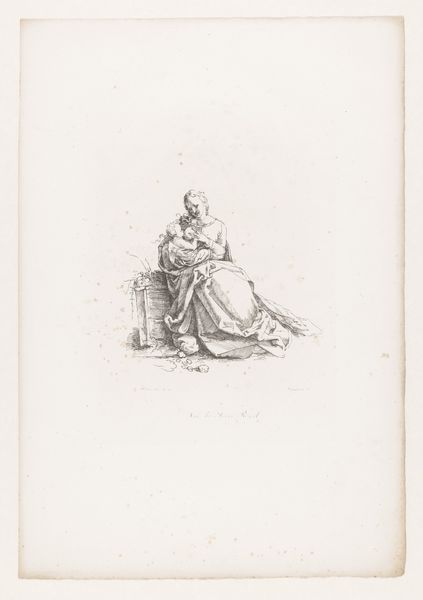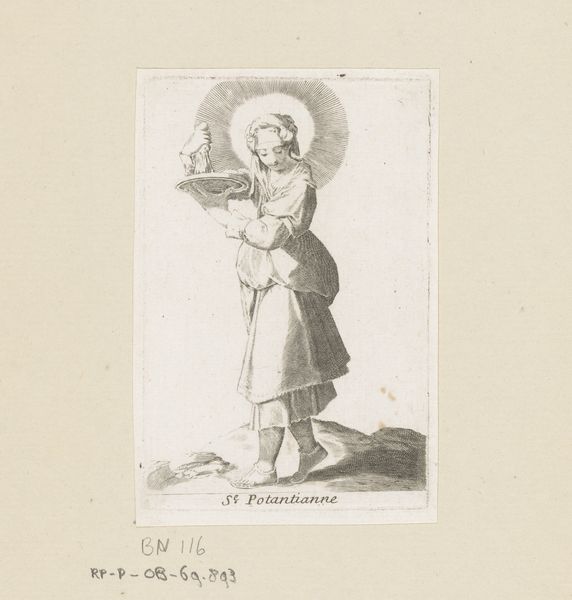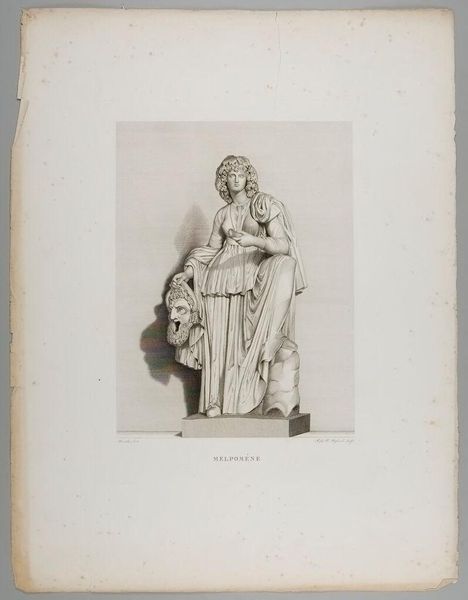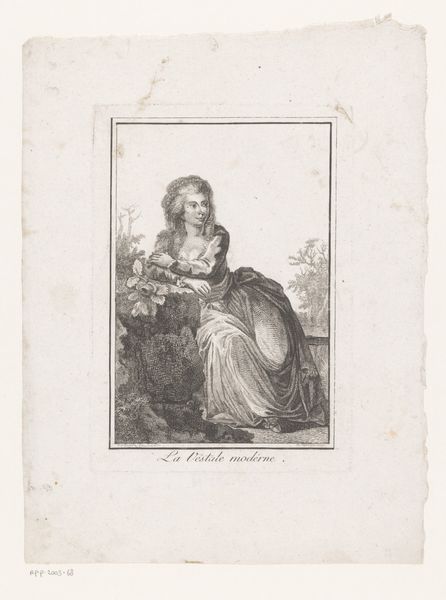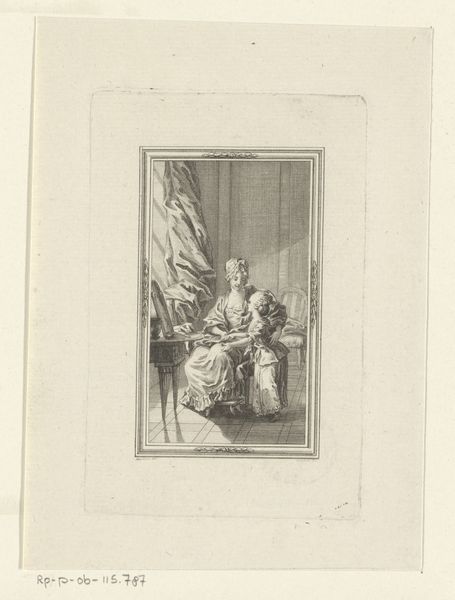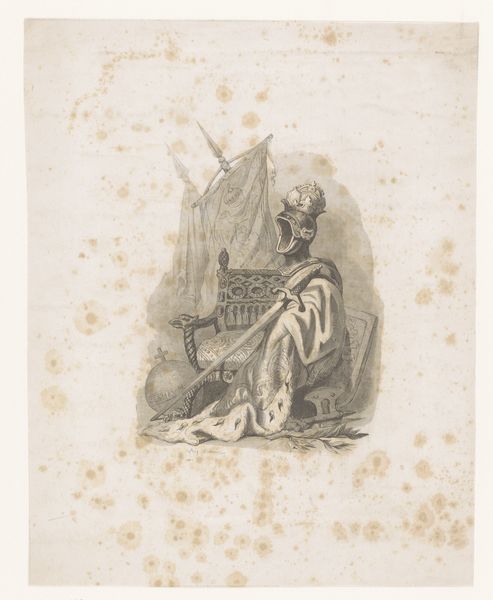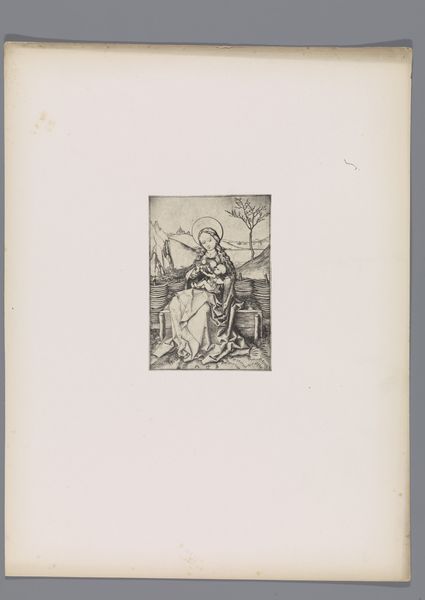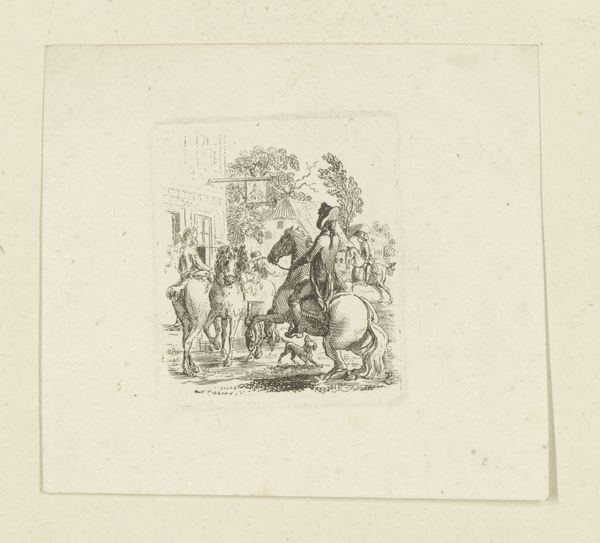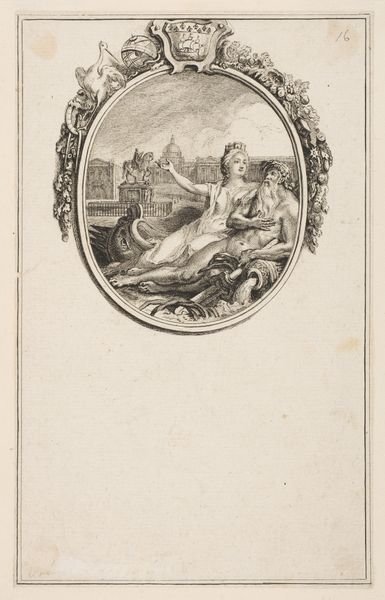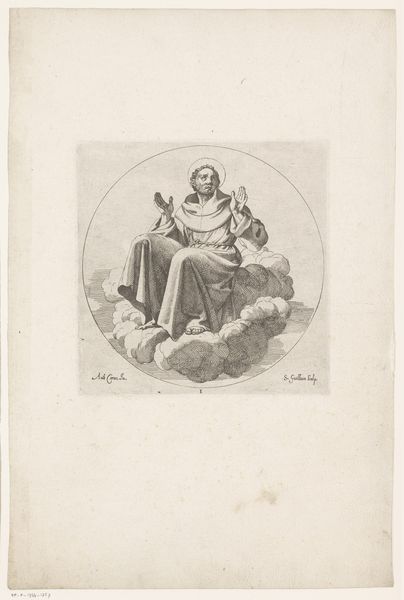
print, engraving
#
portrait
#
baroque
# print
#
figuration
#
engraving
Dimensions: height 171 mm, width 171 mm
Copyright: Rijks Museum: Open Domain
Curator: So, this is Simon Guillain’s "Heilige Laurentius" from 1646. It’s an engraving, which feels so tactile even though it’s a print. Editor: Yes! I was struck by the material quality too! It seems odd to describe an engraving as having a “weight,” but I feel that here, even seeing it on the screen. The saint is presented inside a circle, seated on a cloud, holding what looks like a gridiron. What do you make of this piece? Curator: Well, let's think about the context: this is mid-17th century, printmaking is booming as a mode of both art *and* communication. Consider the labor involved: the engraver meticulously transferring an image onto a metal plate, a skilled artisan mediating religious messaging for wider distribution. The materiality here is key - metal, ink, paper; these become commodities, disseminating religious ideas, shaping perceptions of sanctity, but also generating wealth for both the artist and the publisher. Do you think this impacts how we perceive the work, knowing that? Editor: That makes perfect sense! The fact that this wasn't a unique painting, but something reproducible shifts my view. This work as both art *and* commodity suddenly adds another layer to my understanding. Is the artist therefore not only a maker, but also involved in this consumption system? Curator: Exactly. Think about the socio-economic structures this engraving relies upon! What assumptions are we making about Guillain’s labor if we only interpret it as a work of artistic merit? I suggest that his choices and techniques aren’t only tied to aesthetic considerations. Editor: This is eye-opening. It’s forced me to rethink my traditional notion of art being separate from manufacturing, distribution, consumption…It’s all intertwined here! Thanks for shedding light on that. Curator: Indeed. Analyzing art through the lens of production, not only aesthetics, offers new ways to understand our visual culture.
Comments
No comments
Be the first to comment and join the conversation on the ultimate creative platform.
